What is an “aquarium ecosystem”?
“Aquarium ecosystem” means that aquatic plants, fish and microorganisms interrelate with each other and maintain a favorable environment. Aquatic plants perform photosynthesis and produce oxygen, and fish and microorganisms take in this oxygen as they breathe. Aquatic plants use CO2 released by these living organisms and produce oxygen again. On the other hand, fish and shrimp waste accumulated on the substrate is decomposed by bacteria and will eventually be absorbed by aquatic plants as nutrients. In an aquarium ecosystem, the balance of environment is maintained by these various biological effects.
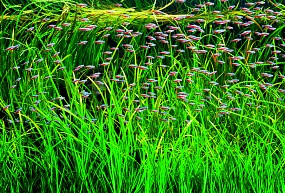
Aquatic plants grow vigorously in an environment with a well-balanced ecosystem. Thriving aquatic plants contribute to better water purification.
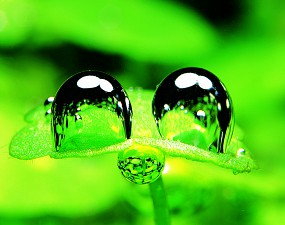
Aquatic plants perform photosynthesis to produce substances necessary for growth on their own. Oxygen is produced as a by-product of photosynthesis.
What should we do to make an ecosystem in an aquarium?
Ecosystems usually comprise five elements: sunlight, water, air, soil and living organisms. For aquariums, they are light, water, CO2 and oxygen, substrate and aquatic plant, fish and shrimp; and it is impossible to form a well-balanced ecosystem if even one of them is lacking. To make an ecosystem in an aquarium, it is crucial to prepare proper lighting, filter, CO2 and substrate systems. On top of it, the aquarium needs to be maintained in a state where bacteria grow and are active in the substrate and filter.
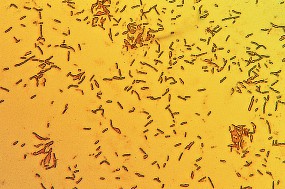
ADA Bacter 100 and ADA Bacter Ball contain bacteria in a dormant state, and they quickly become active once the aquarium is filled with water.
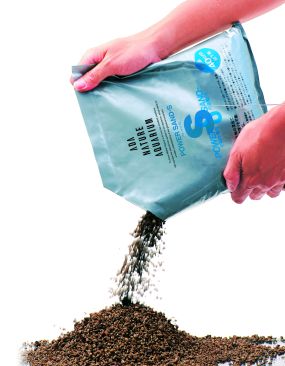
ADA Power Sand displays its beneficial effects as a substrate additive when there is a symbiotic relationship between aquatic plant roots and bacteria.
How can we effectively express an “aquascape” in a layout?
In a natural underwater environment, the aquascape is formed by driftwood, stones and aquatic plants exposed to a flow of water. In view of this, we should be conscious of water flow when making driftwood/stones arrangements and keep a good balance between the portion with dense aquatic plants and open space. Tape-like aquatic plants which overhang along water surfaces are useful to express the flow of water. It is a good idea to use these plants to create an aquascape.
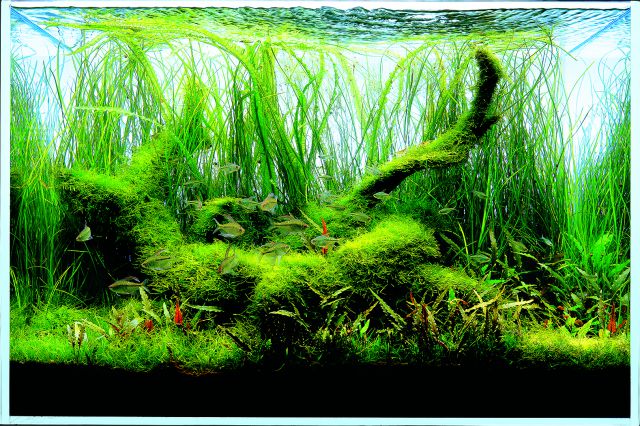
A natural underwater aquascape is created by making an aquascape according to the growth of aquatic plants without focusing too much on the detailed expression.
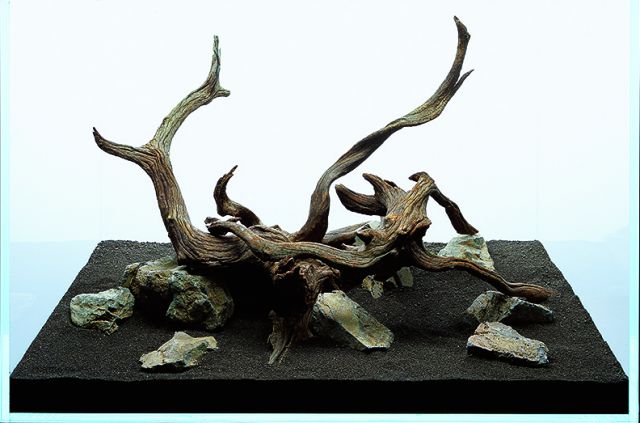
It is important to be conscious of the flow of water and make a stable composition. Be mindful of the flow and orientation of the driftwood branches
At what timing should we plant aquatic plants?
Once the substrate has been set and stones and driftwood have been placed, it is time for planting aquatic plants. Planting must take place before pouring water into the aquarium tank. Planting work will be easier and more comfortable if the water is poured to the level at which the substrate is barely covered with water. Doing this prevents aquatic plants from being buoyant and hands from getting wet. It is advisable to plant aquatic plants as dense as possible from the beginning to have better water purification effect of aquatic plants and facilitate the establishment of aquarium with minimal failure. ADA NA Pinsettes are useful for dense planting of aquatic plants.
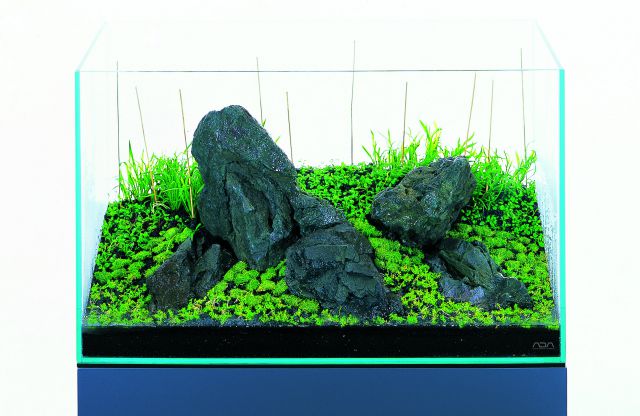
Cover the substrate with a lot of plants to minimize the exposed portion. Bamboo sticks are used to make sure the proper balance of planting space
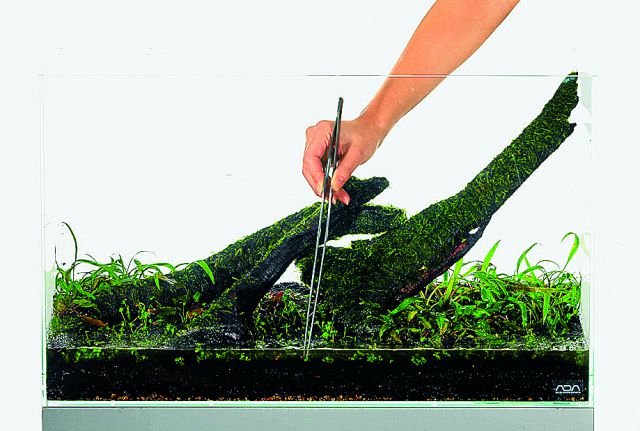
For dense planting of aquatic plants, pour some water into the tank to have a shallow layer of water and carefully plant with Pinsettes
Source and Copyright of the article/photos - Aqua Design Amano - ADA